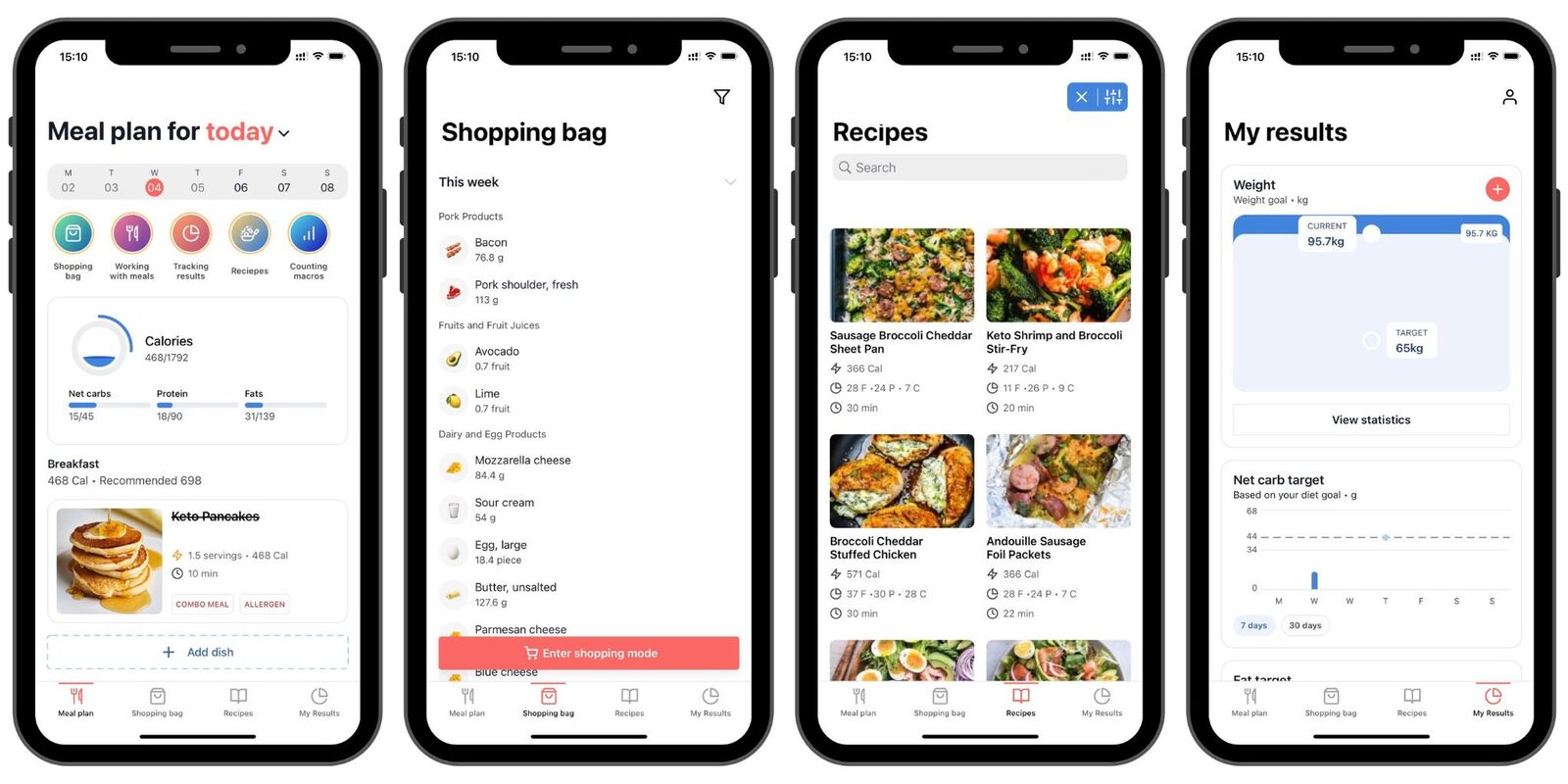The Best Macros For Fat Loss And Muscle Gain
The Best Macros For Fat Loss And Muscle Gain
If you're looking to lose weight, tracking your macronutrients can be an effective way to help you achieve your goals. Your macros, or macronutrients, refer to the three main nutrients that make up your diet: carbohydrates, protein, and fat. By balancing your intake of these nutrients, you can optimize your weight loss and muscle gain goals.
Understanding Macronutrients: Carbohydrates, Protein, and Fat
Many people wonder, "what should my macros be to lose weight?", “what should my macros be for weight loss?”, “how many carbs to build muscle and lose fat?”, “What is the best macronutrient ratio for muscle gain? The answers to these questions can vary depending on a variety of factors, including your age, weight, activity level, and fitness goals. In general, however, most experts recommend a macronutrient split of approximately 40% carbohydrates, 30% protein, and 30% fat for weight loss.
Finding the Right Macronutrient Split for Weight Loss
But what if you want to gain muscle while losing fat? In that case, you might consider adjusting your macronutrient split to focus more on protein and carbohydrates. Macros for muscle gain typically require more protein and carbohydrates, with a split of 40% carbohydrates, 40% protein, and 20% fat. This ratio can help provide the energy needed for workouts, while also supplying the amino acids necessary for muscle growth.
Optimizing Macronutrients for Muscle Gain
On the other hand, if you're looking to lose fat while building muscle, you may want to focus more on protein and fat while reducing your carbohydrate intake. Macros for fat loss and muscle gain often require a split of 30% carbohydrates, 40% protein, and 30% fat, which can help promote muscle growth while also providing enough energy for your workouts.
If you're a female looking to lose fat while building muscle, you may need to adjust your macronutrient intake slightly. Macros for fat loss and muscle gain in females typically require a higher protein intake and a lower carbohydrate intake, with a split of 30% carbohydrates, 40% protein, and 30% fat. So when it comes to macros for weight loss and muscle gain females, the principles are similar to those for men. However, there are some differences to consider.
Macros for Weight Loss and Muscle Gain in Females: Considerations and Differences
Women generally have a lower muscle mass and higher body fat percentage compared to men. This means that women may need to consume fewer calories to create a calorie deficit for fat loss. However, it's important to ensure that you're still getting enough nutrients and fuel to support your workouts and overall health.
In terms of macros, women may benefit from a slightly higher protein intake compared to men. This is because women tend to have a harder time building muscle and maintaining lean mass. Consuming more protein can help support muscle growth and recovery, while also promoting satiety and preventing overeating.
Supporting Fat Loss and Muscle Gain with Healthy Fats
In addition to protein, women also need to pay attention to their carbohydrate intake. Women may be more sensitive to the effects of insulin, which means that consuming too many carbohydrates can lead to spikes in blood sugar and insulin levels. This can make it harder to lose fat and maintain a lean physique.
To support fat loss and muscle gain, women may benefit from a moderate carbohydrate intake that includes mostly complex carbohydrates like whole grains, vegetables, and fruits. Healthy fats should also be included in the diet, as they provide important nutrients and support hormone production.
As with any diet plan, it's important to pay attention to your body's cues and adjust your macros as needed. Some women may find that they feel better with a higher or lower carbohydrate intake, while others may need to adjust their protein intake to support their goals.
Using Calculators and Meal Planning Apps to Calculate Macros
To calculate your macros for fat loss and muscle gain, you can use a variety of online calculators or meal planning apps. These tools take into account your age, weight, height, activity level, and fitness goals to provide you with a personalized macronutrient split. This can help take the guesswork out of meal planning and ensure that you're getting the right balance of nutrients to support your goals.
One popular meal planning app that can help you track your macros is the Salmo app. This app not only counts your macros for you, but it also provides personalized meal plans and recipes based on your dietary preferences and fitness goals. The app allows you to track your food intake and adjust your macronutrient split as needed, making it a convenient and effective tool for anyone looking to lose weight and gain muscle.
The Keto Diet and its Specific Macronutrient Split
But what about the keto diet? While this popular low-carb, high-fat diet can be effective for weight loss and muscle gain, it requires a very specific macronutrient split. Macros for the keto diet typically require a split of 5-10% carbohydrates, 20-25% protein, and 70-75% fat. This ratio is designed to force the body into a state of ketosis, in which it burns fat for fuel instead of carbohydrates.
Whether you're following the keto diet or simply trying to balance your macronutrient intake, tracking your macros can be an effective way to support your weight loss and muscle gain goals. By adjusting your macronutrient split based on your specific needs and using tools like the Salmo app to help you track your food intake, you can optimize your results and achieve the body you've always wanted.
Consideration of Calorie Intake for Weight Loss
When it comes to building muscle and losing fat, your macronutrient intake is just one piece of the puzzle. In addition to tracking your macros, it's important to make sure you're eating a balanced diet that includes plenty of whole foods like fruits, vegetables, lean protein, and healthy fats. Staying hydrated and getting enough sleep and rest is also crucial for optimizing your weight loss and muscle gain results.
In addition to tracking your macros, you may also want to consider tracking your calorie intake. While counting calories can be tedious, it can be an effective way to ensure that you're creating a calorie deficit to support your weight loss goals. Remember, in order to lose weight, you need to be in a calorie deficit, which means you're burning more calories than you're consuming.
Choosing the Right Carbohydrates for Energy and Performance
When it comes to building muscle, getting enough protein is crucial. In addition to supporting muscle growth, protein can also help you feel full and satisfied, which can be helpful for managing cravings and preventing overeating. Good sources of protein include lean meats, poultry, fish, tofu, beans, and lentils.
Carbohydrates are also important for energy and fueling your workouts. However, not all carbohydrates are created equal. To optimize your weight loss and muscle gain results, focus on eating complex carbohydrates like whole grains, sweet potatoes, and vegetables, which provide sustained energy and important nutrients.
The Role of Meal Timing Strategies
In addition to tracking your macros and calories, it can be helpful to experiment with different meal timing strategies to see what works best for you. Some people find that eating smaller, more frequent meals throughout the day helps keep them full and satisfied, while others prefer to stick to larger meals with longer periods of fasting in between.
Ultimately, finding the right macronutrient split and meal timing strategy will depend on your unique body, lifestyle, and goals. But by staying consistent with your diet and tracking your progress, you can make meaningful progress towards your weight loss and muscle gain goals.
In summary, tracking your macros can be an effective way to support your weight loss and muscle gain goals. Whether you're looking to build muscle, lose fat, or both, adjusting your macronutrient split can help optimize your results. By using tools like the Salmo app to help you track your food intake and experimenting with different meal timing strategies, you can create a customized plan that works for you. Remember to eat a balanced diet with plenty of whole foods, stay hydrated, and get enough sleep and rest to support your overall health and fitness goals.
Might be interesting - The Ultimate Guide to Tracking Macros on Keto for Effective Weight Loss





